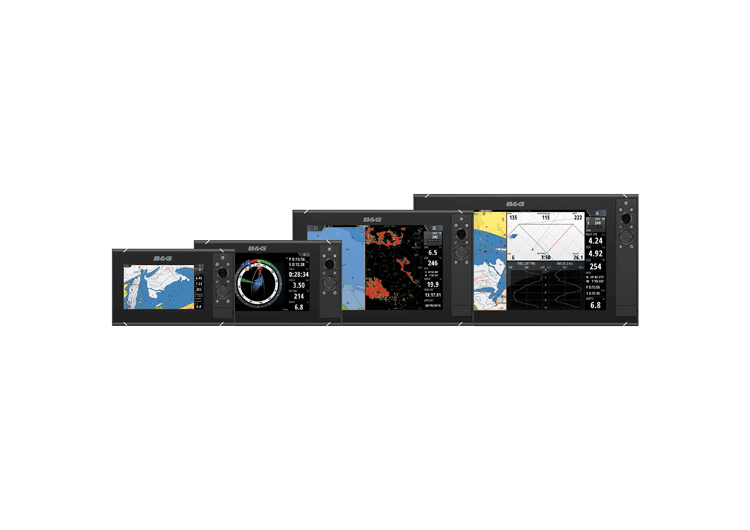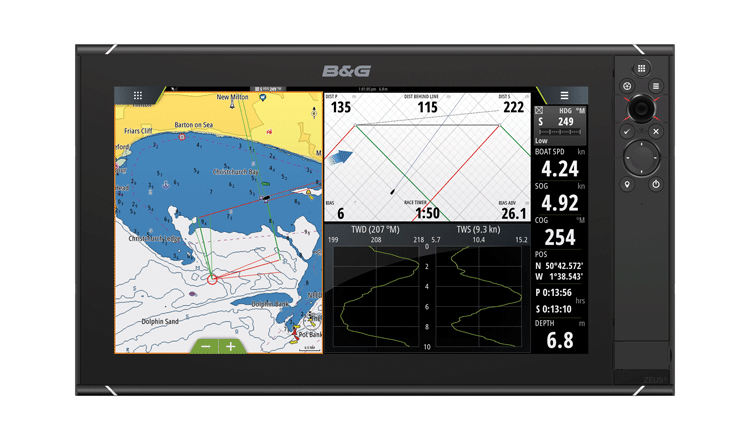Expert Advice on Getting the Most Out of Your Sailboat's Marine Electronics
These days, most Chesapeake Bay sailors have some level of navigation electronics onboard. For many of us, the pieces were accumulated piecemeal. For some, a complete system may have been installed that, while simple to operate on the surface, is quite complex because of the array of functions it offers. This got us at SpinSheet wondering, “Are our readers getting as much as they can out of their electronic navigation gear?” We asked three experts what they think sailors could be doing to get the most out of onboard electronics.
We started with “World Sailing Guru” Charlie Simon. When Simon lived in Seattle, he cruised to Alaska. Then he and his wife sailed their boat through the Panama Canal to Annapolis before embarking on a 14-month circumnavigation. Soon the Simons will be taking their Taswell 58 Celebration on a Northwest Passage trip (see worldsailing.guru). We also spoke with Marc Mayo, a native of Durban, South Africa, and co-owner of M Yacht Services in Annapolis. Mayo has worked in the marine industry all his life and has lived aboard for a good part of it. Finally, we consulted with Mark Jeffries and Mike Jones, co-owners of Mid-Atlantic Marine Electronics. The two represent 40 years of experience with marine electronics. Jones has served as a professional racer and consults regularly with professional racing teams.

The Basics
There was unanimity among our experts about the essential need for every skipper to first master the basic principles of navigation using a chart, a magnetic compass, simple wind indicators, a knot meter, and a depth sounder. All agreed that many sailors are too quick to rely on modern electronics and lose a native sense of navigating. They all stressed that wise skippers should always be ready for the possibility that electronic gear and/or the ship’s electrical service could fail and old-school, marine-navigation skills may be needed to get them home.
There was also strong agreement on the need for good preventive care of electronic equipment in a marine environment. Mayo noted that he often hears customers complain that “my speedo doesn’t work.” Most often this is the result of the paddle wheel being fouled, not the electronics. Mayo’s preventative step is “to keep the paddle wheel in the boat.” He notes that most modern transducers have a check-valve that allows one to remove a cap, pull the paddle wheel with minimum water intrusion, and replace the cap. Mayo’s recommendation is to do this after every trip to virtually guarantee that you always have one of your most valuable read-outs and data inputs: speed through the water.
Mayo also gets many complaints about VHF and other electronic gear problems that result from corrosion on connectors. He reminded us that marine environments are humid and the area under a boat’s cabin sole where many cables are run is “a particularly sweaty place.” He recommends frequent and liberal use of dialectric grease or a product such as LanaKote to protect any electronic connectors on a boat from invasion.
Make the Skipper Smarter
Simon recommends that, while tedious, reading owner’s manuals cover to cover goes a long way toward making the skipper a more adept navigator. Jones adds that almost all the navigation gear manufacturers post to YouTube channels dedicated to their products. He thinks that these videos can be a great way for some to learn about all their gear’s capabilities.
Calibration Counts
Jones and Jeffries pointed out that “the more time you put into calibration, the more your system will be useful.” Calibration techniques and capabilities vary from older to newer systems and across manufacturers. Entry-level systems include setting depth offset, swinging an electronic compass, and adjusting boat speed. Any skipper should be able to read their manual or consult the manufacturer’s YouTube channel to complete the procedures competently. Checking these settings at least seasonally is an important step in maintaining your system.
The same goes for upgrading software. Most manufacturers are constantly updating their software. Right out of the box new gear might already have revised software available. The manuals and YouTube should be able to help most owners handle their own upgrades or at least alert them to the need to consult an expert for help.

Practice, Practice, Practice
Simon advises that even on simple day sails, skippers examine their chart, set waypoints, and follow a route using their autopilot. This practice will pay off on the trips when they encounter complicated and busy shipping areas or challenging weather. Mastery of their gear will give them the confidence that their system has them on a safe course, allowing them to concentrate on keeping an eye out for traffic. He also recommends binoculars with a compass. This gives a skipper the ability to quickly pick out a distant marker by aiming the glasses on the heading for a marker indicated by the chart plotter.
Some Fine Points
Jeffries and Jones offered that there are two kinds of speed. Onboard transducers deliver speed of the hull through the water. A GPS delivers speed over the ground. According to Jones, “GPS will never replace speed through the water for arriving at a good ‘wind solution.’” GPS speed over ground (SOG) can be subject to surges from variations in the wind and current. The boat’s speed through the water will be more constant and reflective of how the boat is performing in the wind. In terms of reaching one’s destination, GPS speed over ground, which includes the effects of current, is more relevant. It’s up to the skipper to balance the two to arrive at the best solution, whether racing or cruising.
A similar situation comes up with the difference between a magnetic compass heading compared to the course over ground (COG) from your GPS. The magnetic compass heading will indicate the orientation of the boat in the water resulting from the wind, sails, and rudder. The GPS course over ground will indicate the line the boat is following regardless of its orientation in the water. Comparing these two is another way to assess the entire picture of how your boat is progressing. Jones, with his racing experience, brought up the third factor which is your “course”: your heading, COG, and leeway (side-slip in the water). These factors result in higher lay lines to objects, lay line to marks for racers.
Typical Shortcomings
Jeffries cited not fully integrating all the gear in a boat’s system as one of the chief shortcomings he encounters. One common scenario is that a boat started with a magnetic compass, knot meter, and depth sounder. Then an autopilot with an electronic compass was added, and finally, a chart plotter was acquired. Without the individual components talking to each other, the data generated is less rich and sometimes conflicting. The skipper may need to transfer inputs manually and be making constant adjustments.
Add-Ons
Mayo feels that using an iPad or a PC as an additional display is one of the best add-ons to a fully integrated navigation system. However, Jeffries and Jones caution that the process of properly integrating these units can be trickier than it looks. In particular they warn that not all iPads have fully functional GPSs. Those using “assisted GPS” may be delivering hybrid data from both cell towers and satellites that may differ from a fully-functional GPS. An iPad with a low battery may revert to cell tower data. Jeffries and Jones don’t recommend using iPads or PCs as alternatives to chart plotters but are advocates of using them as additional displays of the primary navigation system.
Pick Your Waypoints Carefully
Finally, each of our experts mentioned the potential for disaster as well as embarrassment resulting from choosing a marker on a chart plotter as a waypoint. Unless you are paying strict attention, modern electronic navigation systems will take you smack into it. Sounds like good advice.
By Jerry McCann




